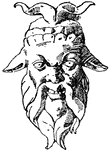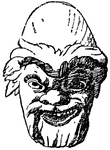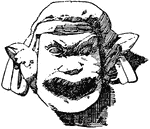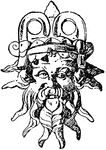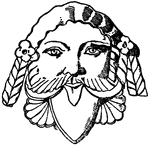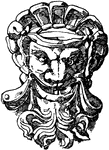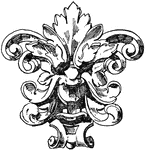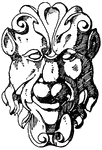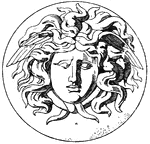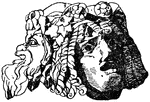
Mask Decoration
The mask decoration was founded in Pompeii, Rome. These masks were used as keystone decorations of doors…

SideMask Decoration
The mask decoration was found in Pompeii, Rome. These masks were used as keystone decorations of doors…
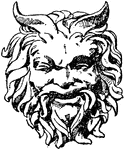
Satyr Mask
The Satyr Mask (Greek Mythological character) was designed during the Italian Renaissance by Sansovino,…
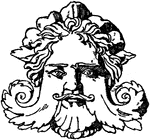
Grotesque Mask
The Grotesque mask is a Venetian Italian Renaissance design. It was often place on keystones, consoles,…
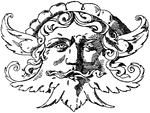
Grotesque Mask
This Grotesque mask was designed during the Italian Renaissance, by Sansovino. It is found on the tomb…
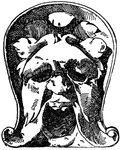
Single Grotesque Mask
The Single Grotesque mask comes from a frieze design during the Italian Renaissance. It was designed…
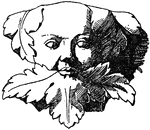
Pilaster Grotesque Mask
The Pilaster Grotesque mask comes from a part of a capital pilaster of the tomb of Louis XII in St.…
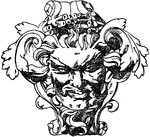
Modern French Grotesque
The Modern French Grotesque Mask were used on keystones, consoles, spouts, handles, shields, capitals,…
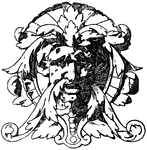
Modern French Grotesque Mask
The Modern French Grotesque Masks were used on keystones, consoles, spouts, handles, shields, capitals,…

Carved Bench Grotesque Mask
The Carved Bench Grotesque Mask is a mask design carved on a bench in Bargello, Florence, Italy.
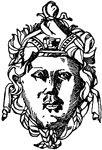
Female Grotesque Mask
The Female Grotesque mask was designed on a metal shield during the German Renaissance.
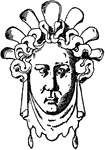
Female Grotesque Mask
The Female Grotesque mask was designed on a metal shield during the German Renaissance.
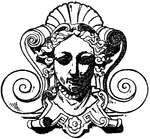
Akroter Grotesque Mask
Akroter Grotesque mask. This mask is usually found on keystones, consoles, spouts, handles, shields,…
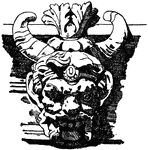
Grotesque Horn Mask
The Grotesque mask is a design used on keystones, consoles, spouts, handles, shields, capitals, panels,…
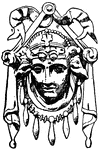
Late French Grotesque
The Late French Grotesque Mask, found in the Theater de Bellecour in Lyons, France. The design was used…
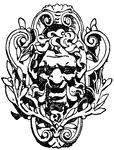
Evil Modern French Grotesque
This Modern French Grotesque mask is found at the Ministry of War in Paris, France. This design used…
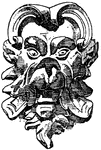
Rounded Grotesque Mask
This Grotesque Mask was designed by Michelangelo during the Italian Renaissance.

Pulled Grotesque Mask
This Pulled Grotesque Mask is on a pedestal of a column on a tomb in Pforzheim, Germany during the German…
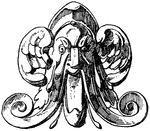
Winged Grotesque Mask
This Winged Grotesque mask design comes from the spout of a can during the German Renaissance.
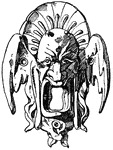
Melting Grotesque Mask
This Melting Grotesque Mask has an escutcheon design of a lock during the German Renaissance.
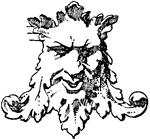
Mad Grotesque Mask
This Mad Grotesque Mask is part of a modern panel designed by sculptor Hauptmann.
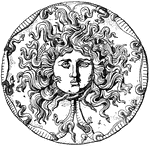
Farnese Medusa Head Dish
The Farnese Dish Medusa Head is an onyx patera, or black dish. It is a Roman design.
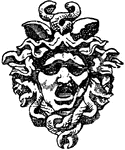
Tympanum Medusa Head
The Tympanum Medusa Head is found in the arch of the entrance of the Royal Palace of Tuileries in Paris,…

Grotesque Pilaster
The Grotesque pilaster is a squatting winged female without arms. It was designed during the Italian…
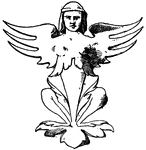
Winged Grotesque Pilaster
The Winged Grotesque pilaster is a squatting winged female without arms. It is found on the tomb of…
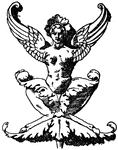
Flying Grotesque Pilaster
This Flying Grotesque pilaster is a squatting winged female without arms. It is found in a palace in…
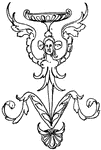
Thin Grotesque Column
This Thin Grotesque column is a squatting winged female without arms. It is found in the Guadagni Palace…
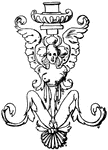
Grotesque Column
This Grotesque column is a squatting winged female without arms. It is found in the Guadagni Palace…
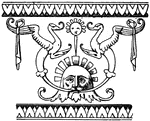
Grotesque Italian Majolica
The Italian Majolica Grotesque is designed on a pavement, made out of fine italian glazed earthenware.…
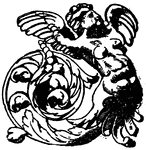
Tall Grotesque Stall
The Tall Grotesque stall is found in San Severino, Naples, Italy. It is a design of a winged female…

Grotesque Stall
The Grotesque stall is found in San Agostino, Perugia, Italy. It is a design of a winged female with…
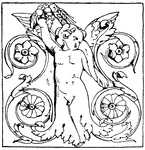
Dancing Half-Figure Panels
The Dancing Half-Figure Panels come from an altar. It is a design of a half-figure human body with the…
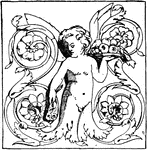
Half-Figure Panels
The Half-Figure Panels come from an altar. It is a design of a half-figure human body with the lower…
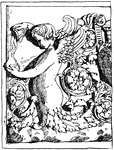
Half-Figure Roman Relief
The Half-Figure Roman Relief is a design of a half-figure human body with a lower half that has a scroll…
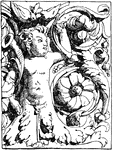
Half-Figure Socle of Altar
The Half-figure Socle of Altar is the base platform design of the altar. It is a design of two half-figure…

Half-Figure Relief
This Half-Figure Relief is a design where the upper half is a human figure and the lower half is a scrolled…

Crouching Sphinx
The Crouching Sphinx is a combination of the human bust with the body of the Lion. The Sphinx is an…
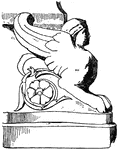
Roman Sphinx
The Roman Sphinx is the bust of a woman with wings and the body of a lion. This design was found in…

Roman Candelabrum Shaft
The Roman candelabrum shaft is a design made out of marble. It is richly decorated with foliage and…

Roman Candelabrum Shaft
The Roman candelabrum shaft is a design made out of marble. It is richly decorated with foliage and…

Bicycle
The bicycle, bike, or cycle is a pedal-driven, human-powered vehicle with two wheels attached to a frame,…
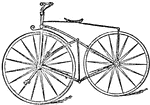
Bicycle
The bicycle, bike, or cycle is a pedal-driven, human-powered vehicle with two wheels attached to a frame,…

Thoracic Duct
"Human Thoracic Duct and Azygous Veins. a, receptacle of the chyle; b, trunk of the thoracic duct, opening…
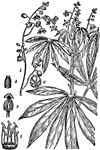
Yuca
The cassava, yuca, manioc, mogo or mandioca (Manihot esculenta) is a woody shrub of the Euphorbiaceae…
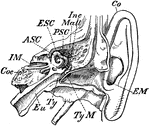
Inner Ear
"Transverse Section through Side Walls of Skull, showing the Inner Parts of the Ear. Co, concha or external…
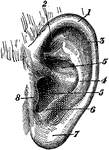
External Ear
"External Ear, or Pinna. 1, helix; 2, fossa of antihelix, or fossa triangularis; 3, fossa of helix,…
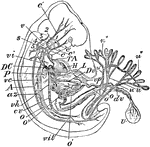
Human Embryo
"Early Human Embryo, giving diagrammatically the principal vessels antecedent to the establishment of…

Encephalon
"Diagram of Vertebrate Encephalon ... in longitudinal vertical section. Mb, mid-brain; in front of it…

Encephalon
"Diagram of Vertebrate Encephalon ... in horizontal section. Mb, mid-brain; in front of it all is forebrain,…
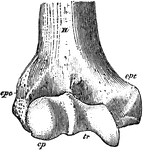
Humerus
"Anterior View, Distal End, of Right Humerus of a Man. H, humerus; epc, epicondyle, or external supracondyloid…

